When it comes to making the perfect cup of espresso, knowing how to use an espresso machine is crucial. Whether you’re a coffee enthusiast or a budding barista, mastering this skill can elevate your coffee game to new heights. In this comprehensive guide, we’ll walk you through the steps to effectively use an espresso machine, ensuring you get the best brew every time.
Espresso machines are essential tools for coffee lovers who want to create rich, flavorful espresso shots at home or in a café. These machines force hot water through finely-ground coffee under high pressure, resulting in a concentrated and aromatic brew. There are various types of espresso machines, including manual, semi-automatic, automatic, and super-automatic, each offering different levels of control and convenience.
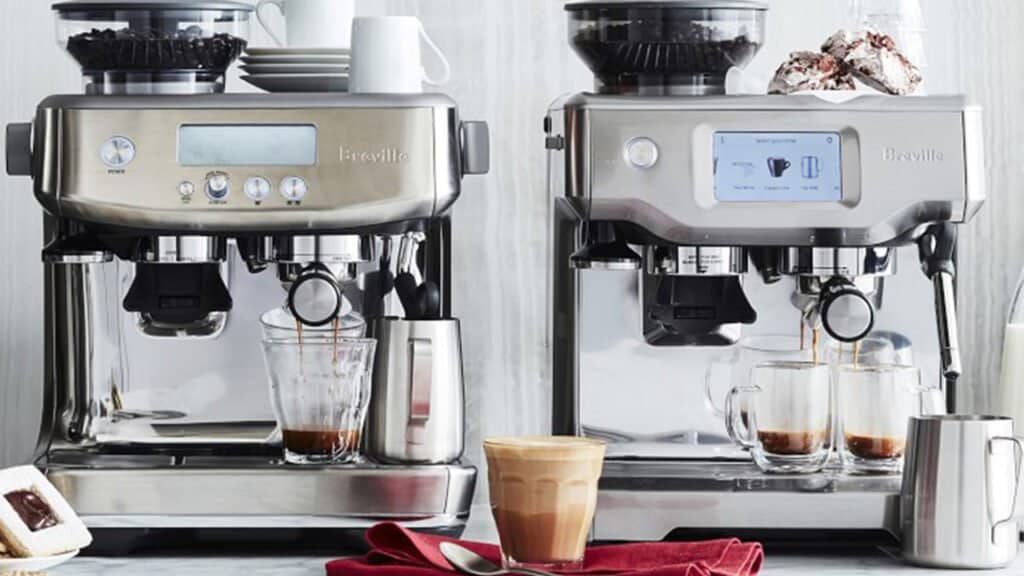
Manual espresso machines require the most skill and involvement, as the user controls every aspect of the brewing process. Semi-automatic machines automate water pressure and temperature but still allow users to control the extraction time. Automatic machines take this a step further by automating the entire brewing process, while super-automatic machines also grind the coffee beans, making them the most user-friendly option.
Understanding the different types of espresso machines, including automatic and semi-automatic espresso machine models, is crucial for selecting the right one for your needs.
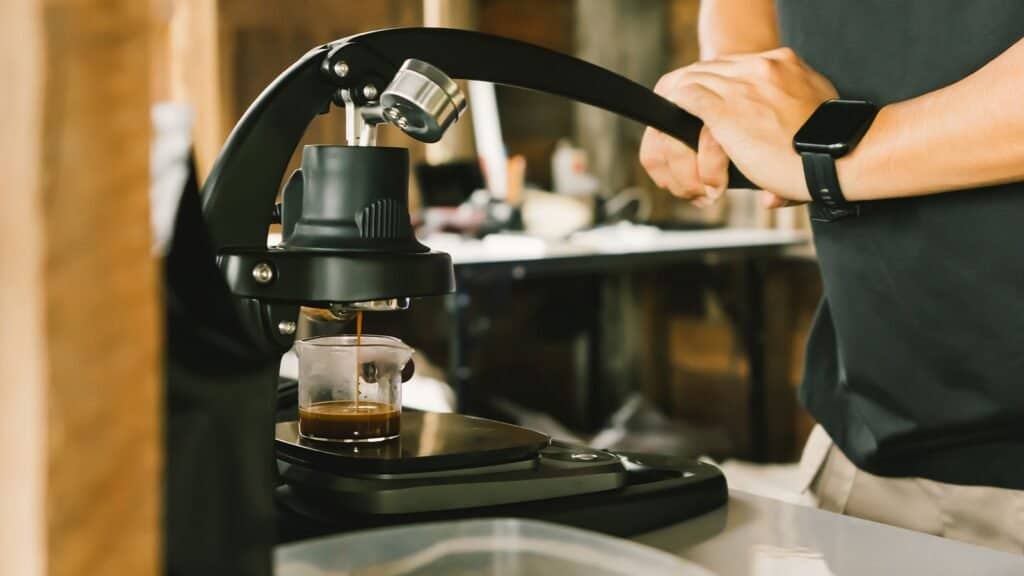
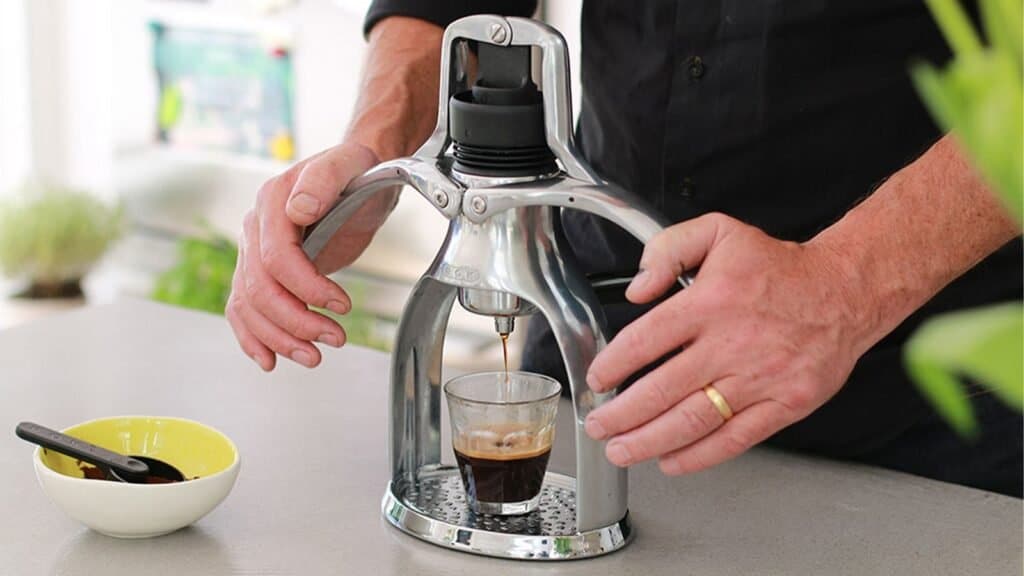
Preparing the Espresso Machine
Before you start brewing, it’s essential to properly set up your espresso machine. Here are the steps to ensure your machine is ready for use:

- Assembly: Begin by assembling the various components of your espresso machine according to the manufacturer’s instructions. This typically involves attaching the portafilter, water reservoir, and any additional accessories.
- Initial Cleaning: Even if your machine is brand new, it’s crucial to clean it before the first use. Rinse the water reservoir, portafilter, and other removable parts with warm water. Run a few cycles of plain water through the machine to flush out any residues or manufacturing oils.
- Filling the Water Reservoir: Fill the water reservoir with fresh, cold water. Using filtered water can help improve the taste of your espresso and prolong the life of your machine by reducing mineral buildup.
- Warming Up the Machine: Turn on the machine and allow it to warm up. This can take a few minutes, depending on the model. Warming up ensures that the machine reaches the optimal temperature for brewing espresso.
- Checking the Grinder: If your machine has a built-in grinder, ensure it is set to the appropriate grind size for espresso. The grind should be fine but not too powdery. Adjust the settings as needed.
Selecting Coffee Beans
Choosing the right coffee beans is a critical step in making a great espresso. Here are some tips and recommendations in selecting the best beans and to help you ensure they are ground to the correct size.

- Bean Type: Opt for high-quality Arabica beans for a smoother and more nuanced flavor profile. While Robusta beans are also used in some espresso blends for added crema and a stronger kick, they can be more bitter.
- Freshness: Always use freshly roasted beans. Coffee beans start to lose their flavor and aroma shortly after roasting, so try to use beans that have been roasted within the past two to four weeks.
- Roast Level: Espresso typically benefits from medium to dark roast beans, which provide a rich, bold flavor and a balanced body. However, personal preference plays a significant role, so feel free to experiment with different roast levels.
- Grind Size: The grind size for espresso is crucial. It should be fine, resembling table salt, but not too fine as to become powdery. A consistent grind ensures even extraction and a smooth espresso shot. If you’re using a grinder, adjust the settings to achieve the ideal grind size.
- Blends vs. Single-Origin: Blends are often crafted to provide a balanced and complex flavor, making them a popular choice for espresso. Single-origin beans, on the other hand, offer unique and distinctive flavors from specific regions. Depending on your taste preference, you can experiment with both.
Filling the Portafilter
Once you’ve selected and ground your coffee beans, the next step is to fill and tamp the portafilter. Properly filling and tamping the coffee in the portafilter is crucial for achieving a balanced and flavorful espresso shot. Here’s how to do it:
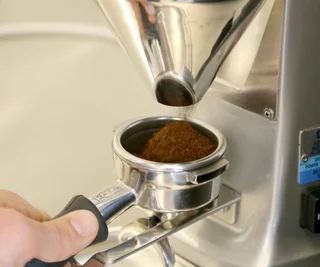

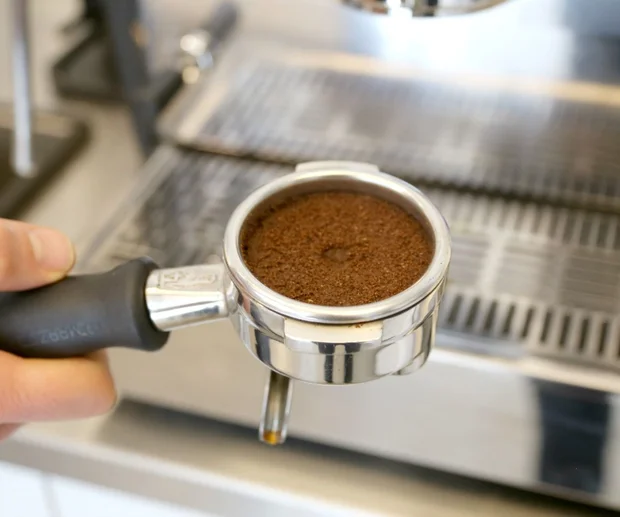
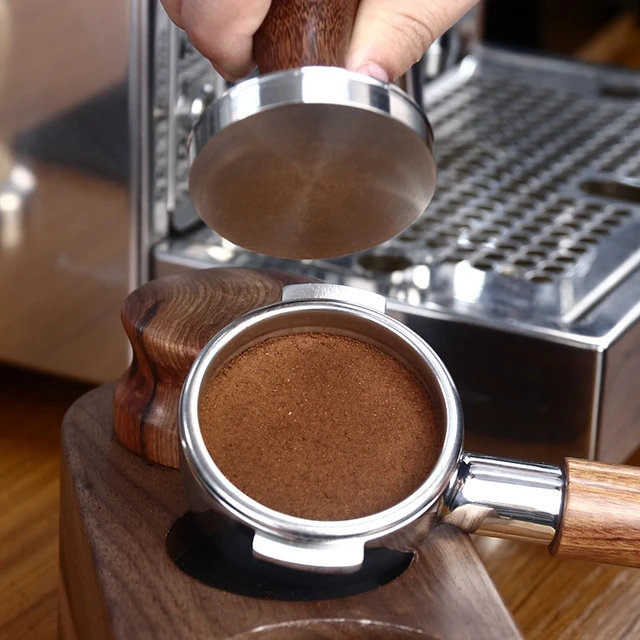
- Dosing the Coffee: Begin by dosing the right amount of coffee into the portafilter. The standard amount is between 18 to 20 grams for a double shot, but this can vary based on your espresso machine and personal preference. Use a scale for accuracy.
- Distribution: Evenly distribute the coffee grounds in the portafilter. This can be done by gently tapping the side of the portafilter or using a distribution tool. Ensuring an even distribution helps avoid channeling, where water flows unevenly through the coffee.
- Tamping: Use a tamper to compress the coffee grounds firmly and evenly. Place the portafilter on a flat surface, hold the tamper with a straight wrist, and apply pressure directly downwards. Aim for about 30 pounds of pressure. A level tamp is essential for even extraction.
- Check the Level: After tamping, check that the coffee is level and the surface is smooth. An uneven surface can lead to uneven extraction, affecting the taste of your espresso.
- Clean the Portafilter’s Edge: Wipe off any excess coffee grounds from the edge of the portafilter to ensure a proper seal with the group head. This prevents water from leaking during the brewing process.
Properly filling and tamping the portafilter ensures that the water flows evenly through the coffee grounds, extracting the full range of flavors and aromas. Mastering this technique is a key step in learning how to use an espresso machine effectively.
Brewing Espresso
Brewing the perfect espresso involves a precise process that ensures each shot is rich, flavorful, and aromatic. Follow these step-by-step instructions to brew the perfect espresso from start to finish:
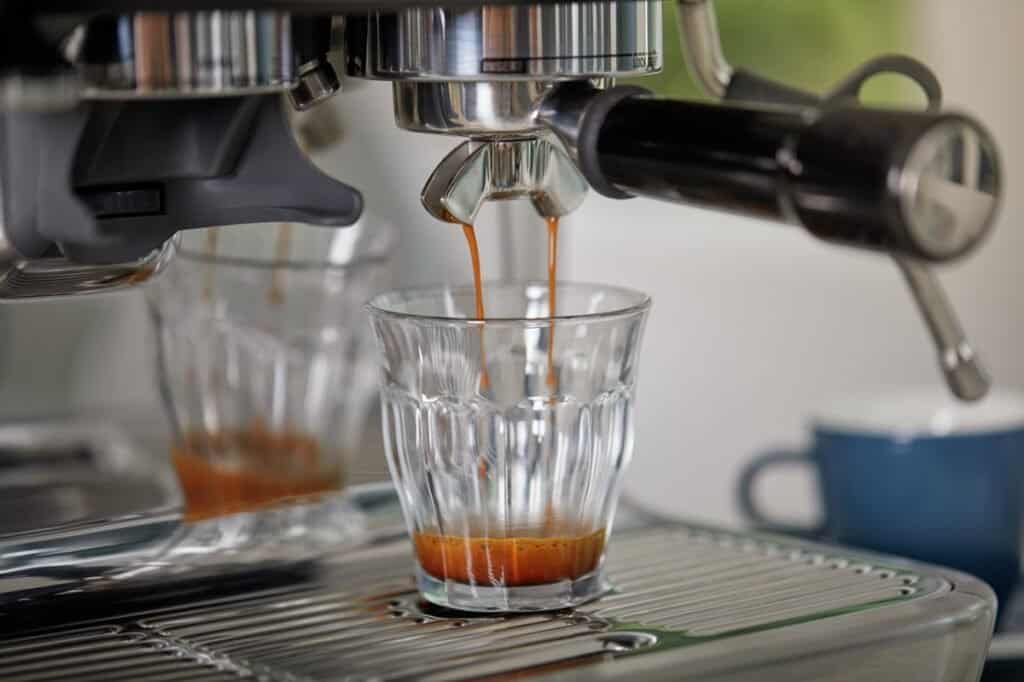
- Preheat the Machine: Ensure your espresso machine is properly preheated. This typically takes about 15-30 minutes. A well-heated machine ensures consistent temperature and optimal extraction.
- Insert the Portafilter: Once you’ve filled and tamped the portafilter, insert it into the group head of the machine. Twist it firmly into place to create a tight seal.
- Start the Extraction: Place your espresso cup under the portafilter spout. Begin the extraction process by starting the machine. The first few seconds should produce a dark, syrupy liquid, followed by a golden stream. This is the crema forming on top of your espresso.
- Timing the Shot: A typical espresso shot should take about 25-30 seconds to extract. If it takes much longer or shorter, you may need to adjust your grind size or tamping pressure. The goal is to achieve a balanced extraction, which produces a rich and flavorful shot.
- Observe the Flow: The flow of the espresso should be steady and consistent, resembling a mouse tail. If the flow is uneven or too fast, it indicates issues with the grind size or tamping.
- Stop the Extraction: Once you’ve reached the desired extraction time, stop the machine. A double shot of espresso typically yields about 2 ounces (60 milliliters) of liquid.
- Serve Immediately: Espresso is best enjoyed immediately after brewing. The flavors and aromas are at their peak right after extraction, so serve it fresh and hot.
Adjusting the Machine Settings
To brew the perfect espresso tailored to your taste preferences, it’s important to know how to adjust the settings on your espresso machine. These adjustments can help you control the strength, flavor, and temperature of your espresso. Here’s how to fine-tune your machine settings:
- Grind Size: The grind size has a significant impact on the strength and flavor of your espresso. A finer grind produces a stronger, more intense flavor, while a coarser grind results in a milder shot. Experiment with different grind sizes to find the one that suits your taste.
- Dose Amount: Adjusting the amount of coffee in the portafilter (the dose) can also affect the strength of your espresso. More coffee will result in a stronger shot, while less coffee will produce a milder flavor. Typically, a double shot requires 18-20 grams of coffee.
- Tamping Pressure: The pressure applied during tamping influences the extraction rate. A firmer tamp slows down the extraction, leading to a richer flavor. Conversely, a lighter tamp speeds up the extraction, producing a lighter shot. Aim for about 30 pounds of pressure as a starting point and adjust based on your preference.
- Extraction Time: The length of time it takes to extract the espresso can be adjusted by changing the grind size, dose, or tamping pressure. Ideally, a shot should take 25-30 seconds to extract. If it’s too fast or slow, adjust the grind size and tamping pressure accordingly.
- Temperature Control: Some espresso machines allow you to adjust the brewing temperature. Higher temperatures can extract more flavors, making the espresso stronger and more bitter, while lower temperatures produce a milder, sweeter shot. Experiment with different temperatures to find your ideal balance.
- Pre-Infusion: Pre-infusion involves wetting the coffee grounds with a small amount of water before the full extraction. This helps ensure even extraction and can enhance the flavor of your espresso. Some machines allow you to adjust the pre-infusion time and pressure.
Monitoring the Extraction Process
Ensuring the quality of your espresso involves closely monitoring the extraction process. Here are some key tips on what to watch for to guarantee a perfect shot every time:
- Flow Rate: The flow rate of your espresso should be steady and consistent, resembling a thin stream of warm honey. If the flow is too fast, the coffee may be under-extracted and taste weak or sour. If it’s too slow, it may be over-extracted, resulting in a bitter or burnt flavor.
- Color Changes: Pay attention to the color of the espresso as it extracts. It should start dark and rich, then transition to a golden-brown stream, and finally a lighter, golden color towards the end. This progression indicates a balanced extraction.
- Crema Quality: A good espresso shot should have a thick, creamy layer of crema on top. The crema should be golden-brown with a slight reddish hue and should last for a few minutes. Thin or bubbly crema can indicate issues with the grind size, tamping, or freshness of the coffee.
- Timing: As mentioned earlier, the extraction time should ideally be between 25-30 seconds for a double shot. Consistently monitor this time to ensure it falls within the desired range. If it’s too short or too long, make adjustments to the grind size, dose, or tamping pressure.
- Taste Testing: Regularly tasting your espresso is crucial for monitoring quality. The flavor should be rich, balanced, and free of bitterness or sourness. If the taste is off, review your extraction process and settings to identify and correct any issues.
- Channeling: Watch for signs of channeling, where water flows unevenly through the coffee puck. This can result in under-extraction or over-extraction and is often caused by uneven tamping or distribution. If you notice channeling, focus on improving your tamping technique and ensuring even distribution of coffee grounds.
Maintenance and Cleaning For Espresso Machine
Keeping your espresso machine clean and well-maintained is key to its longevity and ensuring it consistently produces great coffee. Here’s a comprehensive guide to daily routines, deep cleaning, and basic troubleshooting.
Daily Cleaning Routines
1. Clean the Portafilter and Basket
- After Each Use: Remove the portafilter, knock out used coffee grounds, and rinse both the portafilter and basket under hot water. Use a brush for stubborn residue.

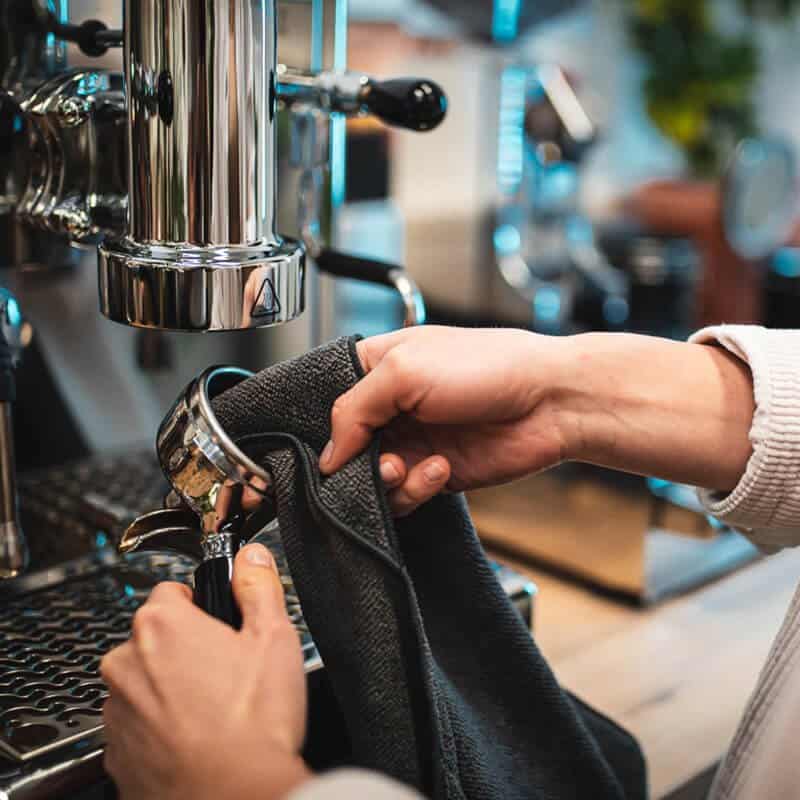
2. Flush the Group Head
- After Each Use: Run hot water through the group head to clear out coffee particles and oils.
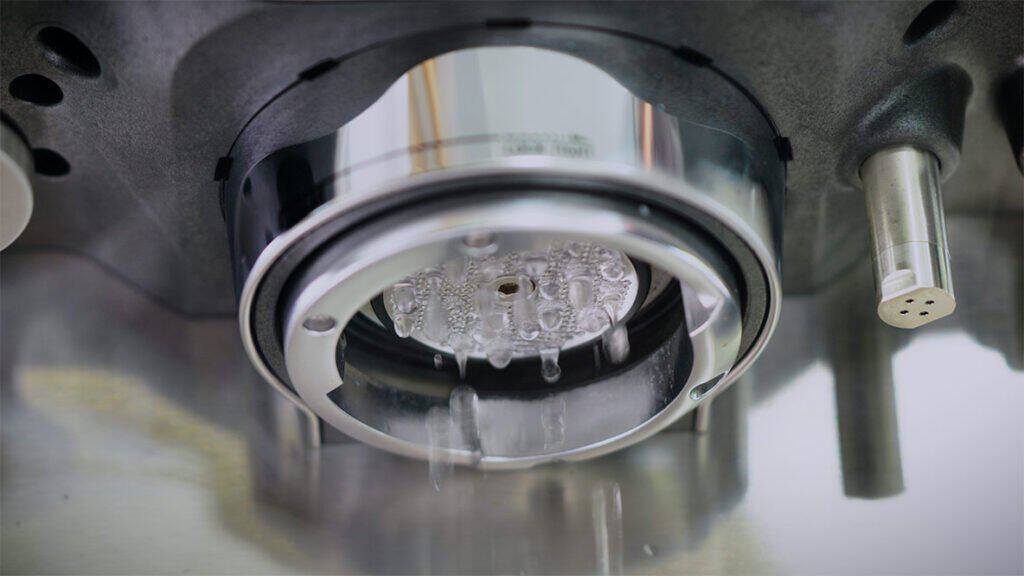
3. Wipe the Steam Wand
- After Steaming Milk: Immediately wipe the steam wand with a damp cloth. Purge the steam wand by turning it on briefly to expel any milk residue.
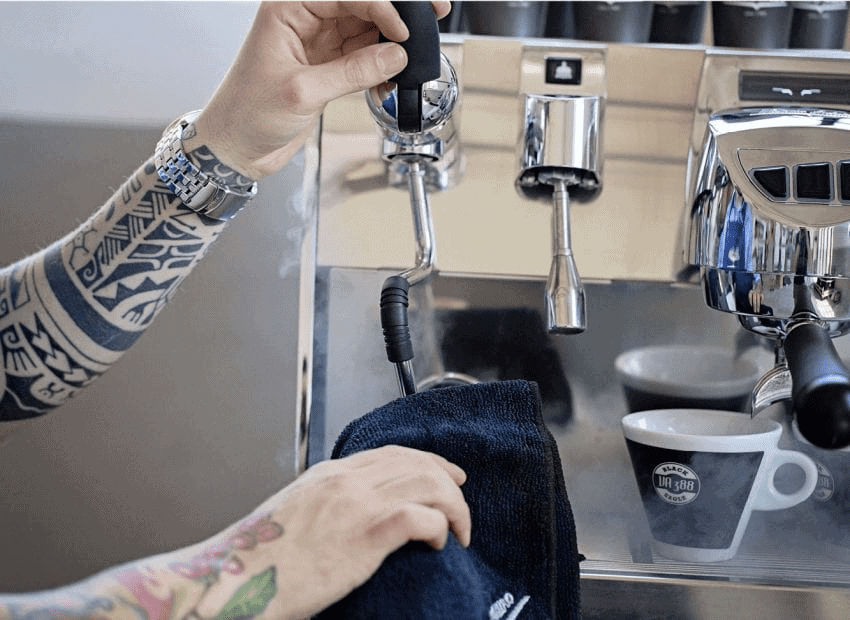
4. Clean the Drip Tray
- Daily: Empty and rinse the drip tray to prevent coffee residue and water buildup.
5. Wipe Down the Machine
- Daily: Use a soft, damp cloth to wipe down the exterior of the machine, removing coffee splatters, fingerprints, and dust.
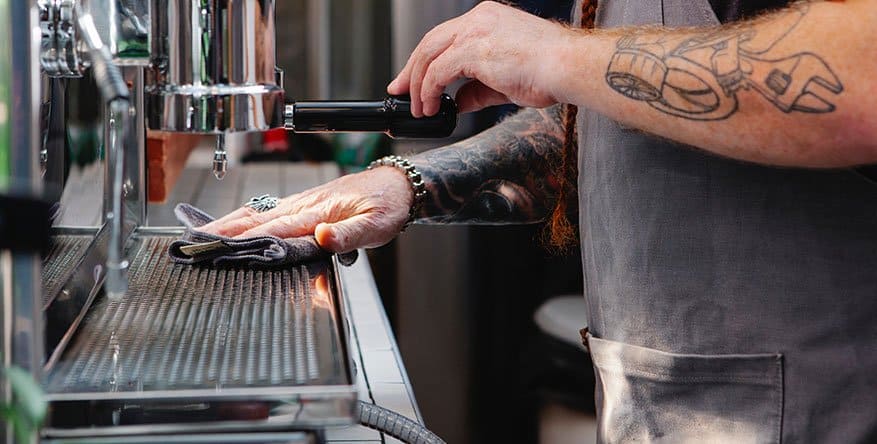
6. Empty the Knock Box
- Daily: Empty the knock box to prevent used coffee grounds from getting moldy and smelly.
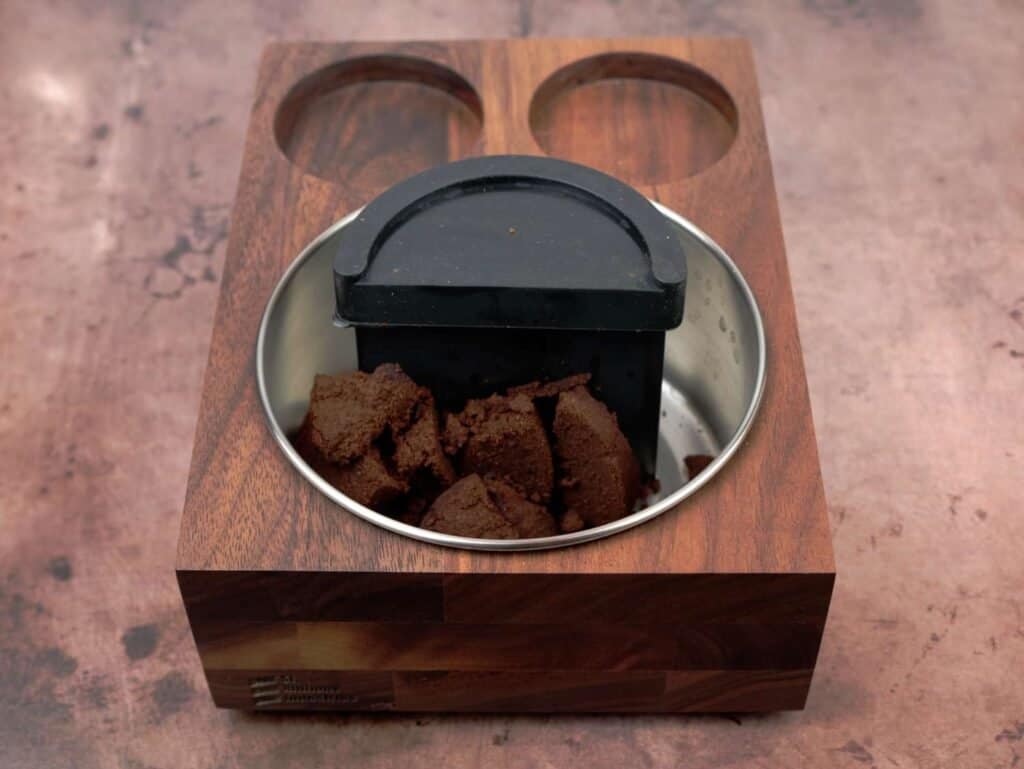
7. Backflush the Machine (If Applicable)
- Daily: For machines with a three-way solenoid valve, perform a backflush with clean water. Insert a blind filter basket into the portafilter, lock it into the group head, and run the pump for about 10 seconds, then release and repeat several times.
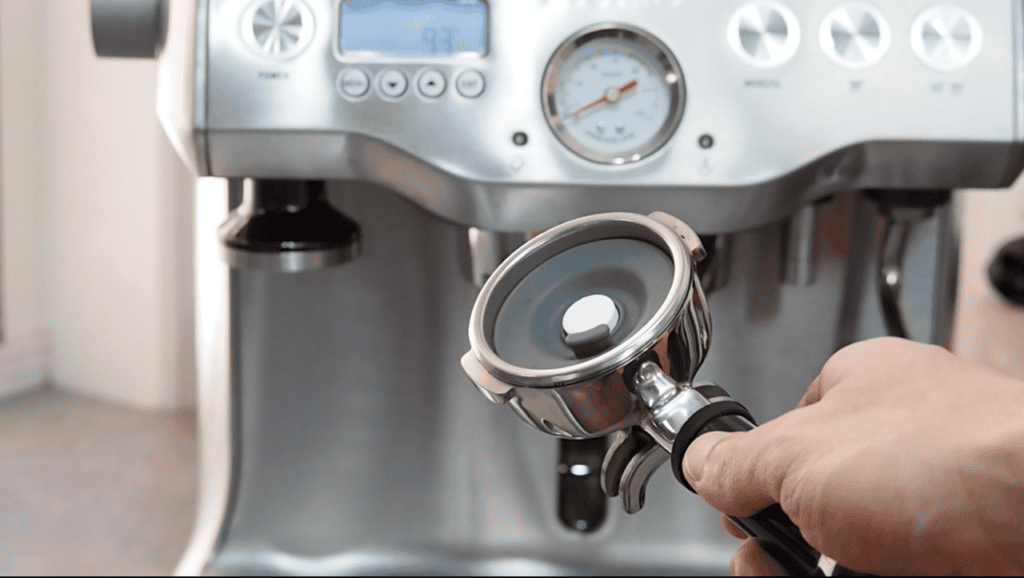
Deep Cleaning and Troubleshooting
Deep Cleaning
Weekly:
- Backflush with Detergent: Use a coffee machine cleaning detergent to backflush your machine. Follow the same steps as daily backflushing, but use the detergent according to the manufacturer’s instructions. Rinse thoroughly by backflushing with clean water multiple times to remove any detergent residue.
Monthly:
- Clean the Grinder: Empty the hopper, use a brush to remove any ground coffee stuck in the grinder, and wipe down the hopper.
- Descale the Machine: If you live in an area with hard water, use a descaling solution to remove mineral buildup. Follow the manufacturer’s instructions for descaling your specific model.
Troubleshooting Common Issues
1. Poor Extraction or No Extraction
- Check Grind Size: Ensure the coffee is ground fine enough for espresso.
- Tamp Pressure: Make sure you’re tamping the coffee evenly and firmly.
- Clean Portafilter: Ensure the portafilter and group head are clean.
2. Low Pressure or No Pressure
- Check Water Supply: Ensure there’s enough water in the reservoir and that it’s properly connected.
- Clean Filters: Make sure the water intake filter and portafilter basket are clean and free of blockages.
3. Steam Wand Issues
- Purge Steam Wand: Always purge the steam wand before and after use.
- Check for Blockages: If the steam wand isn’t producing steam, check for milk blockages and clean thoroughly.
4. Inconsistent Temperature
- Preheat Machine: Ensure the machine is properly preheated before use.
- Descale Regularly: Mineral buildup can affect temperature regulation, so descale your machine regularly.
Enhancing Your Espresso Experience
Taking your espresso experience to the next level involves more than just mastering the basics of how to use an espresso machine. Here are some tips on enhancing the flavor and overall experience, including accessories and additional equipment:
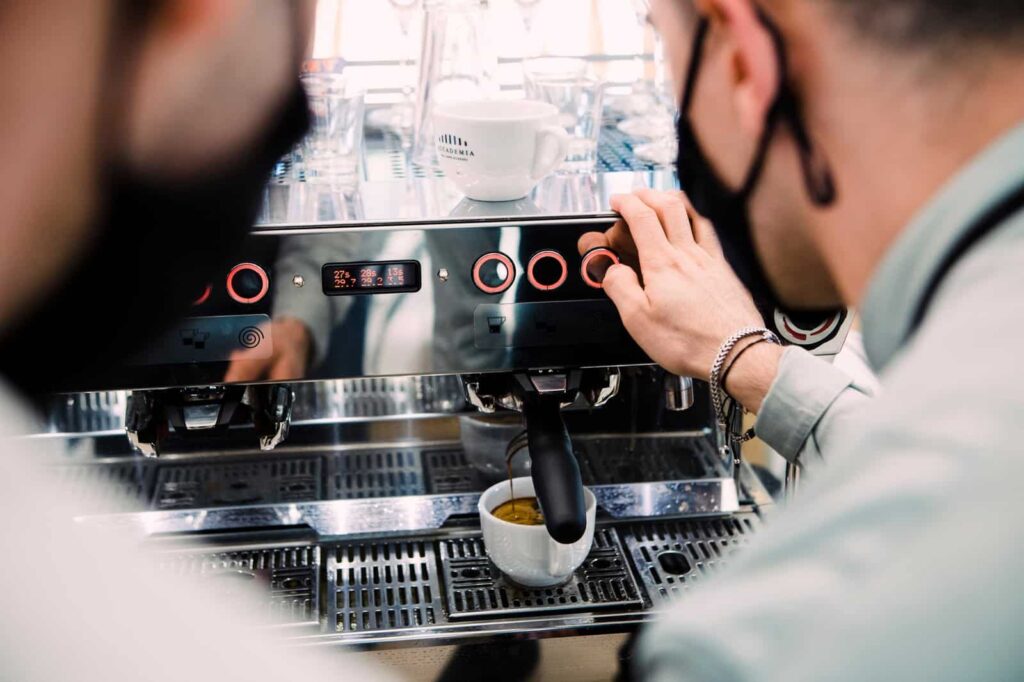
- Using Fresh, Quality Beans: Always use freshly roasted, high-quality coffee beans. Experiment with different origins, blends, and roast levels to find the flavor profiles that you enjoy the most. Store your beans in an airtight container to maintain their freshness.
- Water Quality: Use filtered water to prevent mineral buildup in your machine and to improve the taste of your espresso. Good water quality can make a significant difference in the final cup.
- Experiment with Different Ratios: The standard ratio for espresso is 1:2 (one part coffee to two parts water), but this can be adjusted based on your preference. Trying different ratios can help you discover new flavors and strengths.
- Regular Tasting and Adjusting: Continuously taste your espresso and make small adjustments to your grind size, dose, and extraction time. Keeping a journal of your settings and results can help you refine your technique over time.
Using Accessories
Incorporating additional accessories into your espresso-making routine can enhance the experience and expand your beverage options. Here’s how to effectively use some popular accessories like milk frothers and flavor syrups:
1. Milk Frothers
- Electric Frothers: Easy to use and perfect for making cappuccinos and lattes. Just pour in your milk, select your desired froth level, and let it work its magic.
- Manual Frothers: Require a bit more effort but give you control over the froth. Pump the frother until you achieve the desired consistency.
- Steam Wands: Many espresso machines come with built-in steam wands. Practice makes perfect with these – angle the wand just right to create microfoam for latte art.
2. Tamper
- Consistent Pressure: A good tamper helps you apply consistent pressure when tamping your coffee grounds, ensuring even extraction.
- Weighted Tampers: Consider upgrading to a weighted tamper for better control and consistency.
3. Precision Scales
- Accurate Measurement: Use a precision scale to measure your coffee dose and shot output. This helps maintain consistency and adjust your brew for the best flavor.
- Tare Function: Make sure your scale has a tare function to zero out the weight of your portafilter or cup.
4. Flavor Syrups
- Variety of Flavors: Add a splash of flavor to your espresso with syrups like vanilla, caramel, hazelnut, or seasonal favorites like pumpkin spice.
- Homemade Syrups: You can also make your own syrups at home for a more natural option. Simple syrups are easy to create with sugar and water, then infuse with your favorite flavors.
Experimenting with Recipes
1. Classic Latte
- Ingredients: Double shot of espresso, steamed milk, a small amount of milk foam on top.
- Instructions: Brew the espresso, steam the milk, and pour the milk into the espresso, holding back the foam with a spoon. Top with a small amount of foam.
2. Cappuccino
- Ingredients: Equal parts espresso, steamed milk, and milk foam.
- Instructions: Brew the espresso, steam the milk to a thick froth, pour the milk into the espresso, and spoon the froth on top.
3. Mocha
- Ingredients: Double shot of espresso, steamed milk, chocolate syrup or powder, whipped cream (optional).
- Instructions: Brew the espresso, mix in chocolate syrup or powder, add steamed milk, and top with whipped cream if desired.
4. Flat White
- Ingredients: Double shot of espresso, steamed milk with microfoam.
- Instructions: Brew the espresso, steam the milk to create microfoam, pour the milk into the espresso, aiming for a velvety texture.
5. Macchiato
- Ingredients: Double shot of espresso, a dollop of milk foam.
- Instructions: Brew the espresso, and spoon a small amount of milk foam directly onto the espresso.
6. Affogato
- Ingredients: Double shot of espresso, a scoop of vanilla ice cream.
- Instructions: Brew the espresso, and pour it over the scoop of ice cream in a bowl or glass.
Pro Tips for Enhancing Flavor
- Fresh Beans: Always use freshly roasted beans for the best flavor.
- Water Quality: Use filtered water to avoid any off-flavors from tap water.
- Temperature Control: Ensure your machine is properly preheated and maintains a consistent temperature.
- Experiment with Blends: Try different coffee blends and single-origin beans to discover new flavors.
Experimenting with these recipes can enhance your appreciation for espresso and expand your coffee-making skills.
Disclosure: Our blog contains affiliate links to products. We may receive a commission for purchases made through these links. However, this does not impact our reviews and comparisons. We try our best to keep things fair and balanced, in order to help you make the best choice for you.


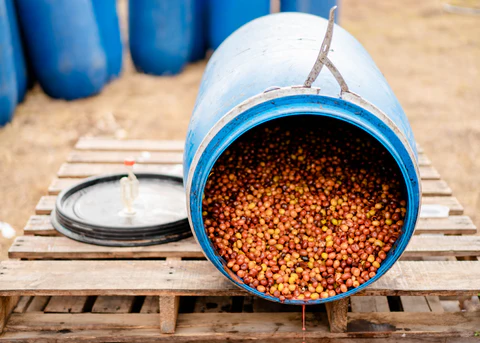

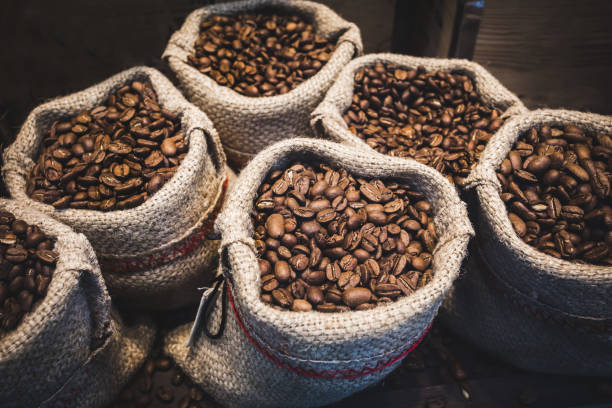

5 Responses